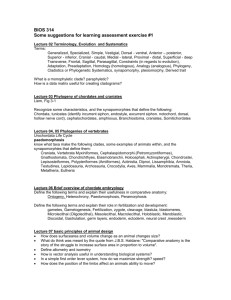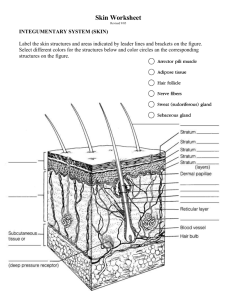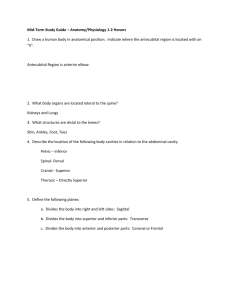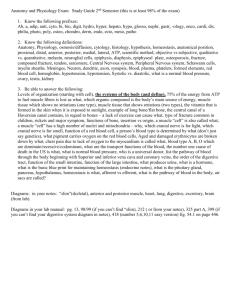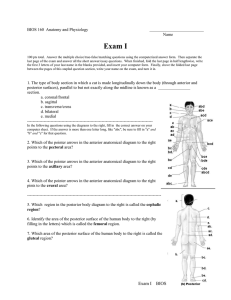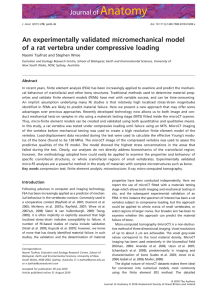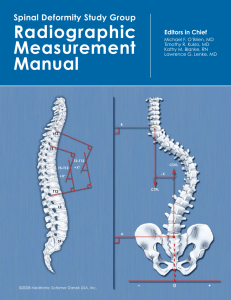Human Anatomy & Physiology241 Practice Exam
advertisement
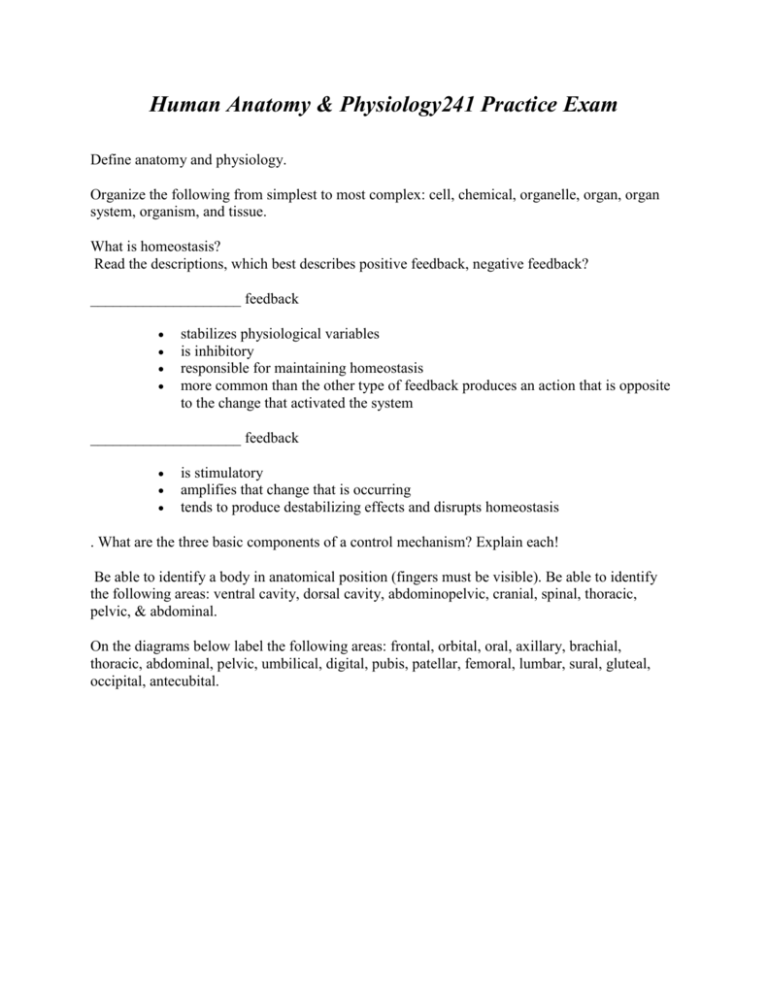
Human Anatomy & Physiology241 Practice Exam Define anatomy and physiology. Organize the following from simplest to most complex: cell, chemical, organelle, organ, organ system, organism, and tissue. What is homeostasis? Read the descriptions, which best describes positive feedback, negative feedback? ____________________ feedback stabilizes physiological variables is inhibitory responsible for maintaining homeostasis more common than the other type of feedback produces an action that is opposite to the change that activated the system ____________________ feedback is stimulatory amplifies that change that is occurring tends to produce destabilizing effects and disrupts homeostasis . What are the three basic components of a control mechanism? Explain each! Be able to identify a body in anatomical position (fingers must be visible). Be able to identify the following areas: ventral cavity, dorsal cavity, abdominopelvic, cranial, spinal, thoracic, pelvic, & abdominal. On the diagrams below label the following areas: frontal, orbital, oral, axillary, brachial, thoracic, abdominal, pelvic, umbilical, digital, pubis, patellar, femoral, lumbar, sural, gluteal, occipital, antecubital. Be able to distinguish between a transverse, frontal, and sagittal plane. Be able to use the following terms to indicate direction: superior/inferior, anterior/posterior, dorsal/ventral, medial/lateral, proximal/distal, superficial/deep. The knee is proximal/distal to the ankle. (circle correct term). The heart lies medial/lateral to the lungs. (circle correct term) Be able to differentiate between active and passive transport processes. (simple diffusion, osmosis, facilitated diffusion, endocytosis/exocytosis, cotransport, etc) What are the five functions of the epithelial tissue? Draw a cell that each of the following shapes: squamous, cuboidal, columnar. What is the difference between epithelial tissue that is "simple" compared to "stratified" What is connective tissue? Give two examples of connective tissue. Construct a chart describing each of the three types of muscle tissue, smooth, skeletal and cardiac. Include cell shape, striations/no striations, number of nuclei, voluntary/ involuntary, etc. What is a neuron? Neuroglia? Draw a neuron and label all significant parts. Use an arrow to illustrate the direction of the impulse. Be able to identify each of the basic tissue types from a diagram of each. Describe the basic functions of the skin. . Be able to identify the following structures on a diagram of the skin: epidermis, dermis, subcutaneous tissue, stratum corneum, stratum granulosum, stratum lucidum, stratum germinativum, hair, sweat gland, muscle, oil gland. What are the four types of bone, named for their shape? What type of tissue is bone? What is the difference between compact and spongy bone? There are three types of bone cells: osteocytes, osteoclasts, and osteoblasts, describe each & their functions. What is the difference between the axial and appendicular skeleton? Be able to identify the following bones on a diagram: frontal, mandible, maxilla, occipital, parietal, temporal, scapula, clavicle, sternum, humerus, radius, ulna, phalanges, metacarpals, carpals, cervical vertebra, lumbar vertebra, thoracic vertebra, pelvis, femur, tibia, fibula, tarsals, metatarsals. What is the difference between a joint, a ligament, and a tendon? What is the primary function of muscle tissue? Be able to identify location and give action of each of the following muscles: deltoid, stemocleidomastoid, pectoralis major, biceps brachii, triceps brachii, rectus abdominis, adductors, sartonius, gastrocnemius, hamstrings, quadriceps, latissimus dorsi, trapezius, gluteus maximus. Describe the two major divisions of the nervous system, CNS and PNS. Name and decribe any subdivisions of either. What is a reflex arc? What are the basic components? Describe each. What is a synapse? What occurs during an action potential? The brain is divided into four major areas: diencephalon, brain stem, cerebrum and cerebellum. Describe what occurs in each section and draw a diagram indicating the location of each. Be able to identify the following structures in the eye: retina, choroid, sclera, comea, aqueous humor, vitreous humor, lens, iris, optic nerve. . Be able to identify the following structures in the ear: pinna, external auditory canal, incus, malleus, stapes, cochlea, serruicircular canals, tympanic membrane. What are rods and cones? Describe each of the following: astigmatism, nearsightedness (myopia). farsightedness (hyperopia), Be able to distinguish between different types of hair
